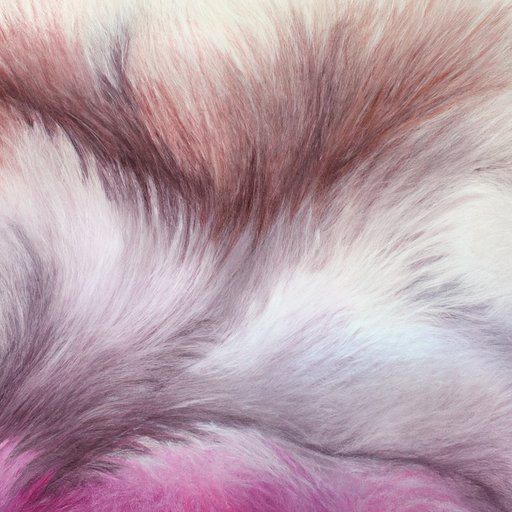
I. Introduction
Drawing is an art form that requires patience, practice, and attention to detail. Drawing realistic fur can be a challenge for many, but it doesn’t have to be. With the right techniques and tools, anyone can master the art of fur drawing.
II. Mastering the Art of Fur Drawing: A Step-by-Step Guide for Beginners
For beginners, it’s important to start with the basics. This means focusing on shading, texture, and perspective. By mastering these techniques, you’ll be able to create realistic fur that looks and feels authentic.
The first step is to shade your drawing to create depth. This means understanding the direction of the light source and how it affects the fur. Use soft pencils such as 2B or 3B to lightly shade the areas where the fur would be the darkest. Add more layers of shading where needed to create the appearance of depth.
The next step is to add texture to your drawing. Fur is not smooth, so it’s important to create the illusion of texture. Use short, quick, strokes with a sharpened pencil to mimic the look of fur. This technique works well for short fur or whiskers.
Finally, make use of perspective by understanding how the fur should fall on the animal’s body. Fur typically follows the shape of the animal, so make sure to draw it accordingly. Take note of any tufts or longer hair that may be present on the animal.
III. 5 Foolproof Tips for Realistic Fur Drawing
While mastering these basic techniques, there are some tips and tricks that can help you create even more realistic fur.
First, it’s important to understand the direction of the fur. This means observing which way the fur grows on the animal and making sure to draw it accordingly. This creates a sense of motion and life to your drawing.
Second, layer your drawing to create depth. By using different pencil strokes and layering them on top of each other, you can create the illusion of depth and texture.
Third, use a variety of tools to create different textures. While pencils are the most common tool, try using brush pens or even a toothbrush to create a more textured look.
Fourth, make use of negative space. Sometimes, the best way to create a fur effect is to draw around the fur, leaving the white of the paper to create the illusion of fur.
Fifth, practice. Just like any other skill, the more you practice, the better you’ll become.
IV. Let’s Get Creative: Experimenting with Different Styles of Fur Drawing
There are many different styles of fur drawing, from stippling to pointillism to cross-hatching. Each style can create a unique look and feel for your drawing.
Stippling involves using small dots to create texture, while pointillism uses small dots of color to create an image. Cross-hatching involves using overlapping lines to create texture and depth. Try out each style to find one that works best for you.
V. The Importance of Observation: Drawing Fur That Looks Live and Breathes
Observation is key when it comes to drawing realistic fur. Pay attention to details such as “whisker spots” or “guard hairs.” Notice how the fur changes in texture and thickness in different areas.
To develop an eye for detail, practice observing animals in person or through pictures. Take note of subtle details that make the fur look authentic.
VI. From Pencils to Colors: Adding Colors to Your Fur Drawings for a Stunning Finish
Adding color to your fur drawing can bring it to life. When adding color, it’s important to blend and shade carefully to create a realistic look.
Use colors that match the animals fur, and add depth by layering different shades. Consider using colored pencils or watercolors for a unique look and feel.
VII. The Best Tools for Drawing Fur – Finding Your Style
While pencils are the most common tool for fur drawing, there are many other options available. Brush pens, markers, and charcoal can all be used to create different textures and effects.
Experiment with different tools to find one that works best for you. This is the best way to develop your unique style.
VIII. Conclusion
Drawing fur can seem like a daunting task at first, but with practice and patience, it can become a rewarding and enjoyable experience. Start with the basics of shading, texture, and perspective, and don’t be afraid to experiment with different styles and tools. With these tips and tricks, you’ll be creating realistic fur drawings in no time.




